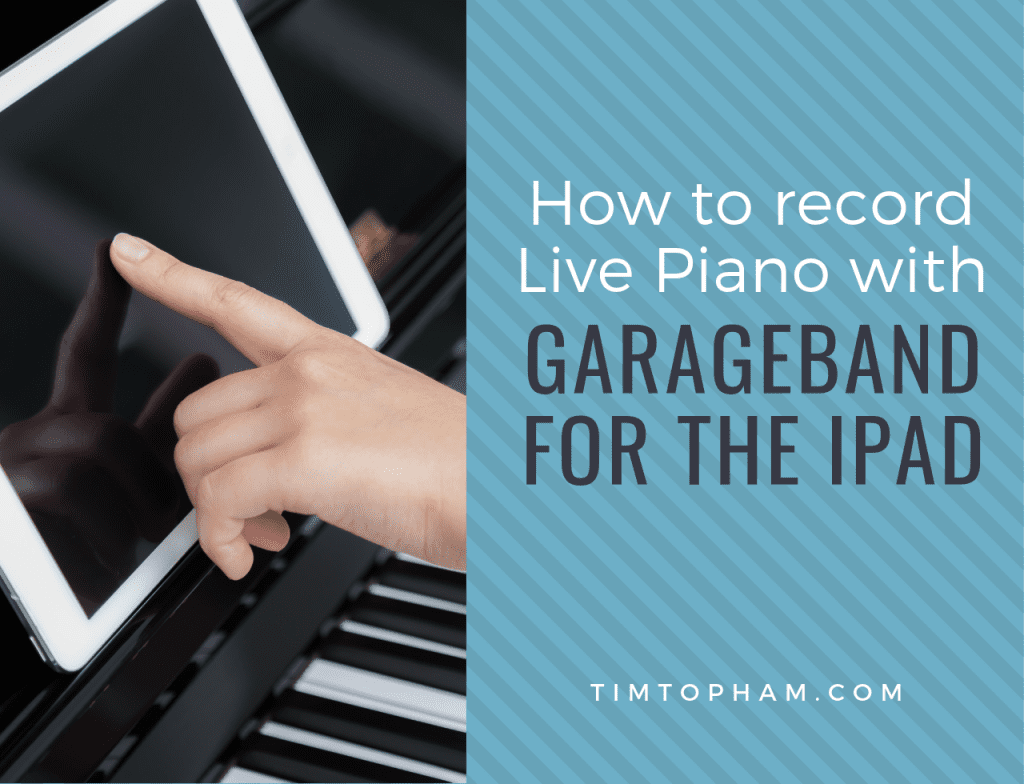Today’s free download isn’t to be missed.

Today I’m going to show you how you can record live piano simply through GarageBand.
Most teachers would just think to record piano through their phone’s voice memo recorder, but trust me, getting comfortable with GarageBand is a great way to make your piano lessons fun.
If you’ve been following my work for a bit of time, you’d know I’m a big fan of GarageBand.
In fact, I’ve got my very own GarageBand course in the Inner Circle – you can download a sneak peek from my course at the bottom of today’s blog post.
Playing a piece of music back to your students can be a great way to get them thinking deeply about what they need to improve on.
You can record a piece and analyse what went right and wrong with them, and then set some goals and plan for the next lesson.
But you can also use GarageBand creatively to encourage your students to experiment with their own compositions.
You can then add a backing tracks and wow – your student has just created their very own song!
Alright, let’s get stuck in.
We will start with the basics.
GarageBand is a musical iOS application, and works really well with iPads.
It’s a multi-track musical recorder.
GarageBand allows you to…
And it’s completely free, but unfortunately doesn’t work for Android users.
I highly recommend that you use external speakers with GarageBand.
It’s not possible to use GarageBand just with the iPad speakers. If you want your students to play piano to a backing track (which you’d play on GarageBand), they just won’t be able to hear it.
You can actually watch me compose a piece of music in full using GarageBand right now.
GarageBand has two main uses for me – creating compositions, and recording live piano.
I want to quickly show you today how to record live piano through GarageBand. Hint – it’s easy!
Watch the video above or check out my other GarageBand resources to find out how to create a composition through GarageBand.
Here’s a step-by-step guide.
Let’s get a bit more complex.
If you have a digital piano, you can plug it directly into the iPad and record straight into the GarageBand app through that.
By doing that, you can eliminate all of the external noise and it will only record what you play on the digital piano.
The advantage of recording straight into GarageBand, is that you can then add drum, guitar and other musical tracks.
Prefer to watch a video explainer? Here’s all of this information in a couple of quick minutes.
I really think GarageBand is one of the best ways you can add some creativity to your lessons.
Students love using technology, and getting them to create compositions and backing tracks through GarageBand is a fantastic task to set for them to complete over a longer period of time.
As promised, here’s a download from my Getting Groovy with GarageBand course.
If you’ve ever looked for…
…then this course is for you!
Here’s an overview of what’s covered in my GarageBand course:
Do you use GarageBand? How do you find it? Do you have any quick tips?
Leave your thoughts below.

Lew says:
Does this information apply to a Mac OSX system as well? Am having trouble recording my Yamaha CLP over iReal backing tracks. Thanks.
Tim Topham says:
These instructions are just for iPad. If you’re trying to do this with GarageBand on a mac laptop on MacOS then I’m not 100% the process sorry. Best to see if there is another video showing this on YT.